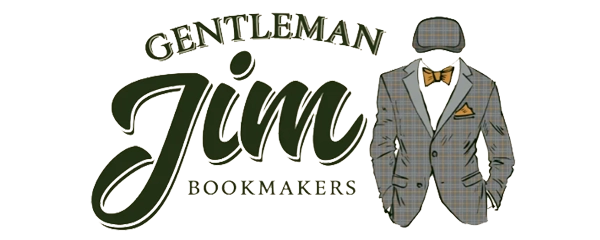Perhaps I am delving into too thorny a subject, but summer is heating up and I have long wanted to think about how games, like any art form, are a reflection of the society into which they are born, more or less deformed. In them we pour our desires to escape, feelings like love, loneliness, hate, desire…. And through their stories, and especially with their game mechanics, we can experience situations that would be impossible (or inadvisable) to reproduce in the real world. And here I have formulated a reflection on a very unlikely combination: drugs and video games.
No, this text is not a list of games in which a mustachioed plumber eats a mysterious mushroom that gives him superpowers, but a safe journey through several examples of games that somehow introduced drugs as a theme in their story, as an interactive object or as the core of their gameplay. They all present a different view of this practice, which is experienced in the real world in a very different way than games. Is it right to mythologize its consumption? Is it better to avoid it? Or is it perhaps better to integrate it as a function of a larger experience and provide the player with sufficient tools to voluntarily relinquish it? Big questions, not so simple answers. I’m a video game player, but I’m also a parent, and in this article I’ll reflect on different ways to deal with drugs in video games while recommending some great games that might be worth your attention.
Super Mario and the Mushroom: debunking the oldest sandwich legend in video games
It is hard to talk about video games without passing by their most recognizable character, albeit on his toes, who was also for a time associated with drugs to prevent children from becoming addicted to screens. We have to go back some 30 years to remember those parent association campaigns that called for keeping video games and their chubby hero with red cap away from your children. Consumption of hallucinogenic mushrooms? Nothing could be further from the truth. Nor was it a reference to the mushrooms and cakes that Alice, the protagonist of Alice in Wonderland, took to change her size.
The mushroom that was on Amanita muscaria looks like, is just a simple device that Miyamoto-san then associated with fantasy and fairy worlds, not a reference to an actual hallucinogenic species. Mario eats mushrooms, as it could have been apples, stones or any other object. That’s all.
Sorry mom, but your theory of a drug-addicted Super Mario in 1990 doesn’t hold water.
The frivolity of modern Fallout and The Elder Scrolls: all benefits, no consequences.
I should explain the headline because Fallout, as we all know, is much more than what Bethesda has offered us since Fallout 3. Although the same substances are still used in the universe in all games (Buffout, Jet, Mentats, Psycho, X-Cell, etc.), their use in the Black Isle -games was much more characterized by risk-reward. Addiction to Jet (a drug that drastically improves your damage in combat), for example, is almost incurable in Fallout 2, but hardly a mild annoyance in Fallout 3 and Fallout 4, where it can be easily “cured.” It is this impunity that blurs the concept of drugs in a game from a last resort to just another consumable.
The nuance is that taking drugs in the Fallout universe is often more beneficial than harmful to the character, so the message there may be more confused. Of course, we don’t want to tell anyone how to live through the nuclear post-apocalypse either, right?
If you have to live with the aftermath: We Happy Few and the gray zone
There are many dystopian games, but few explore the gray zone of hallucinogen use (voluntary or appropriate under duress) like Compulsion Games bold title, We Happy Few. Drugs are no longer a secondary concept to occupy the center of the game’s narrative, in which a drug called Joy (a recurring name for drugs in games, as we shall see later) keeps you in a state of artificial “joy” to forget the loss of your children at the hands of the Nazis in World War II.
The setting of We Happy Few, Wellington Wells, shows us the two sides of the coin between those who choose to fool themselves into taking Joy (even though they really have no choice) living in the colorful Hamlyn Village neighborhood, versus the outcasts who chose not to forget or face their loss without Joy in the Garden District. Although clearly two different collectives, the game explores the shades of gray between the two; Those who were first marginalized and are now trying to get Joy at all costs, and those who feel trapped by the authoritarian Hamlyn Village government, losing their own identity in the process while submitting to the deadly authority of the drug.
Yes, We Happy Few is an odd title and it’s not perfect, but it introduces some reflections on how consumption dominates the addict’s existence, and exposes it in a way that would only be possible through video games.
When the game system humanizes the real problem: Dealing with alcoholism in Disco Elysium
Role-playing games are a perfect setting to explore the concept of substances that alter the organism in some way. If we previously discussed the “joyous” impunity of Fallout, we now do so from the basis of a character whose addiction both adds and subtracts capabilities, creating a singular narrative. “Harry” Du Bois maintains from the start an inner monologue that, more than a reference to detective film noir, is a reflection of his own Delirium Tremens provoked by a life of alcohol and drugs.
Harry’s Terrible Tie, a reflection of this addiction to alcohol, is the one that introduces him to thoughts and paranoias that distort his physical appearance, which of course is a way of showing us the degradation of his mind. The story of the main character in Disco Elysium is that of a man broken by his excesses who seeks one last moment of redemption, and for that alone it is worth playing.
That, and it’s one of the best cRPGs in recent history.
These are just a few examples of how the subject of drugs and addiction is treated in video games. As you can imagine, we left out many other examples that deserve attention, which we will publish in a second volume. If you think there is one that should be included and that we may have missed, don’t hesitate to leave the title in the comments.








 A Game of Two Halfs – EA Sports FC 26 offers vastly different gameplay experiences, offline and online
A Game of Two Halfs – EA Sports FC 26 offers vastly different gameplay experiences, offline and online